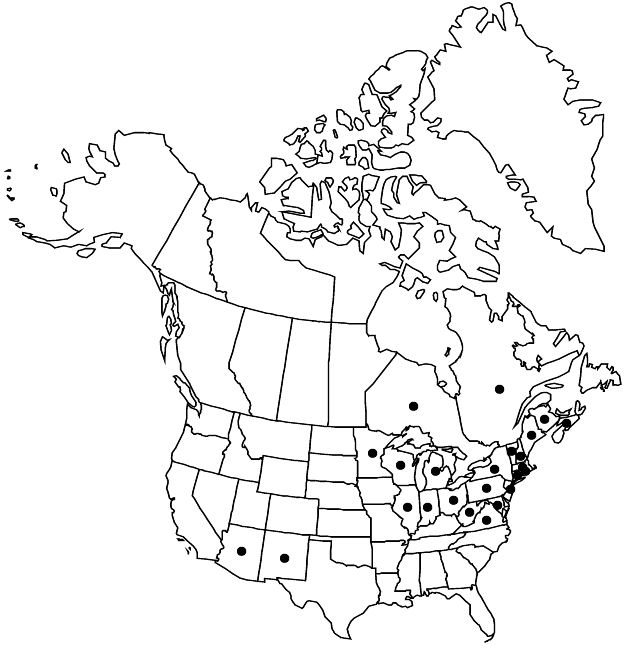Difference between revisions of "Euphorbia vermiculata"
Amer. Monthly Mag. & Crit. Rev. 2: 206. 1818.
FNA>Volume Importer |
imported>Volume Importer |
||
| (4 intermediate revisions by 2 users not shown) | |||
| Line 16: | Line 16: | ||
|name=Chamaesyce rothrockii | |name=Chamaesyce rothrockii | ||
|authority=Millspaugh | |authority=Millspaugh | ||
| + | |rank=species | ||
}} {{Treatment/ID/Synonym | }} {{Treatment/ID/Synonym | ||
|name=C. vermiculata | |name=C. vermiculata | ||
|authority=(Rafinesque) House | |authority=(Rafinesque) House | ||
| + | |rank=species | ||
}} {{Treatment/ID/Synonym | }} {{Treatment/ID/Synonym | ||
|name=Euphorbia rothrockii | |name=Euphorbia rothrockii | ||
|authority=(Millspaugh) Oudejans | |authority=(Millspaugh) Oudejans | ||
| + | |rank=species | ||
}} | }} | ||
|hierarchy=Euphorbiaceae;Euphorbia;Euphorbia sect. Anisophyllum;Euphorbia vermiculata | |hierarchy=Euphorbiaceae;Euphorbia;Euphorbia sect. Anisophyllum;Euphorbia vermiculata | ||
| Line 46: | Line 49: | ||
-->{{#Taxon: | -->{{#Taxon: | ||
name=Euphorbia vermiculata | name=Euphorbia vermiculata | ||
| − | |||
|authority=Rafinesque | |authority=Rafinesque | ||
|rank=species | |rank=species | ||
| Line 61: | Line 63: | ||
|publication year=1818 | |publication year=1818 | ||
|special status=Weedy | |special status=Weedy | ||
| − | |source xml=https:// | + | |source xml=https://bitbucket.org/aafc-mbb/fna-data-curation/src/2e0870ddd59836b60bcf96646a41e87ea5a5943a/coarse_grained_fna_xml/V12/V12_55.xml |
|genus=Euphorbia | |genus=Euphorbia | ||
|section=Euphorbia sect. Anisophyllum | |section=Euphorbia sect. Anisophyllum | ||
Latest revision as of 19:16, 5 November 2020
Herbs, annual or short-lived perennial, with slender, fibrous taproot. Stems prostrate to ascending or erect, not mat forming, 10–35 cm, usually sparsely to moderately strigillose, pilose, or villous, rarely glabrate hairs sometimes in longitudinal lines. Leaves opposite; stipules distinct or connate, triangular to narrowly triangular or laciniate into subulate to filiform divisions, 0.6–1.3 mm, glabrous or sparsely pilose; petiole 0.2–0.9 mm, glabrous, villous, or strigillose; blade ovate, oblong, or elliptic, often falcate, 5–18 × 3–9 mm, base asymmetric, one side rounded and other cordate, margins usually serrulate especially in distal 1/2, rarely nearly entire, apex acute or obtuse, surfaces not papillate, sparsely pilose, villous, or sericeous (especially near base), often glabrate (especially older leaves); 3–5-veined from base. Cyathia solitary at distal nodes or in small, cymose clusters at branch tips; peduncle 0.2–2.5 mm. Involucre obconic, 0.7–1.1 × 0.5–0.8 mm, glabrous; glands (2–3)–4, red to reddish green, circular to oblong, 0.1 × 0.1–0.2 mm; appendages absent or white, turning pink with age, flabellate, oblong, circular, or forming narrow lunate border around margin of gland, 0.1–0.3 × 0.2–0.4 mm, distal margin entire or slightly lobed. Staminate flowers 5–15. Pistillate flowers: ovary glabrous; styles 0.3–0.5 mm, 2-fid 1/2 length. Capsules oblate to subglobose, cocci not elongated nor terminating in empty portion, 1.4–1.8 × 1.7–2.1 mm, glabrous; columella 1.1–1.5 mm. Seeds brown, gray, or almost black, ovoid to oblong, 3–4-angled in cross section, 1.1–1.4 × 0.7–0.8 mm, rugulose and sometimes also with low transverse ridges that do not interrupt abaxial keel.
Phenology: Flowering and fruiting spring–fall.
Habitat: Juniper-oak woodlands, temperate deciduous forests, grasslands, pine forests, oak forests with sycamores, walnuts and alders, often in disturbed areas.
Elevation: 0–2600 m.
Distribution

Juniper-oak woodlands, temperate deciduous forests, grasslands, pine forests, oak forests with sycamores, walnuts and alders, often in disturbed areas, N.B., N.S., Ont., Que., Ariz., Conn., Ill., Ind., Maine, Md., Mass., Mich., Minn., N.H., N.J., N.Mex., N.Y., Ohio, Pa., R.I., Vt., Va., W.Va., Wis., Mexico.
Discussion
Euphorbia vermiculata has an interesting disjunct distribution; it ranges from central Mexico to Arizona and New Mexico, and is also present in the northeastern United States and southeastern Canada.
Selected References
None.